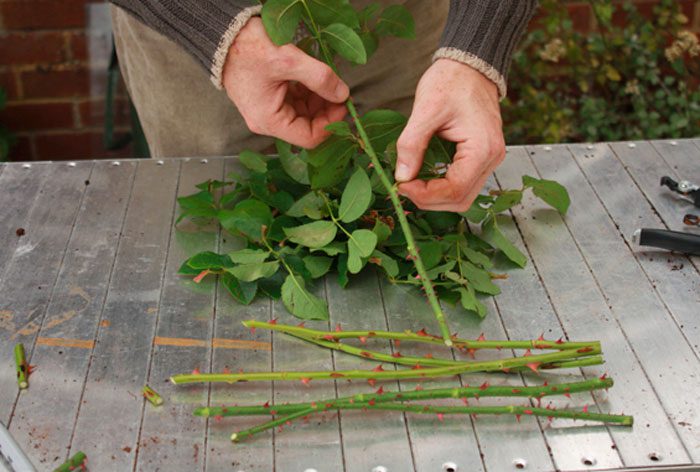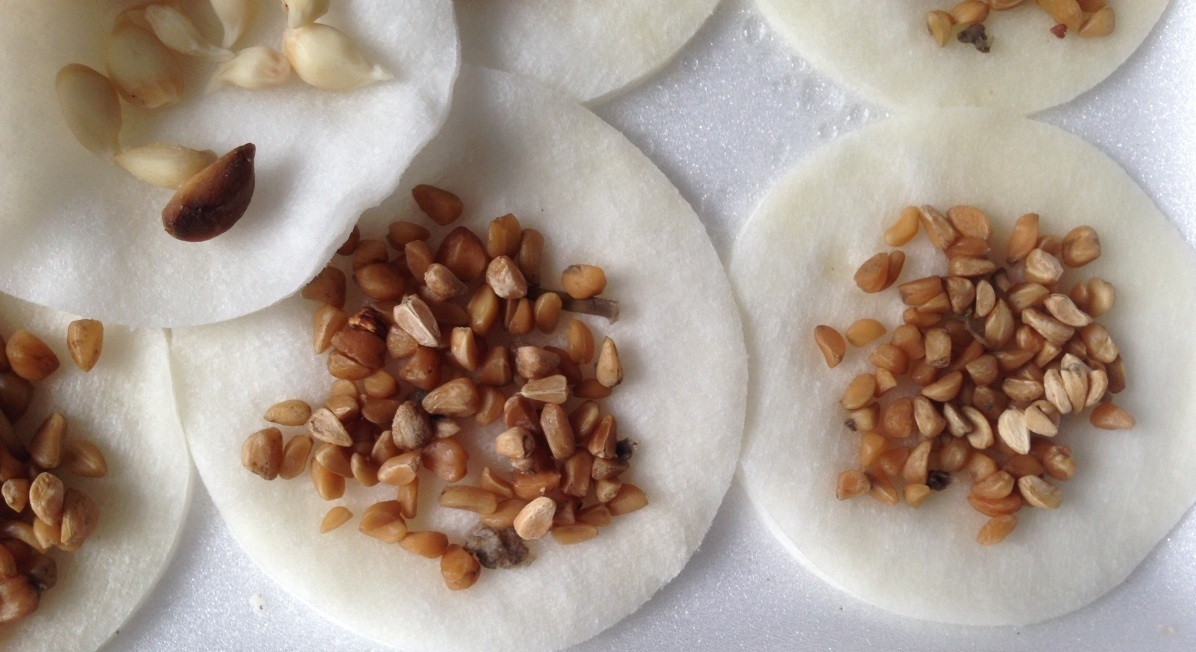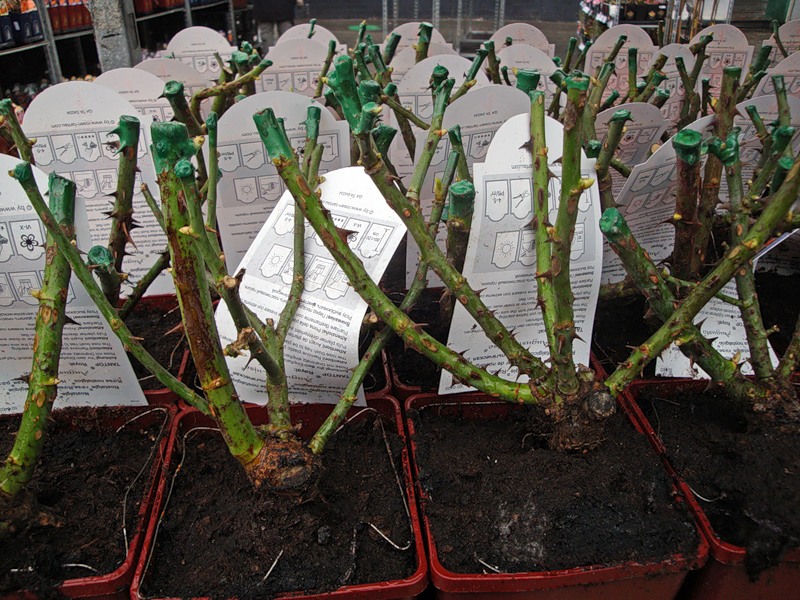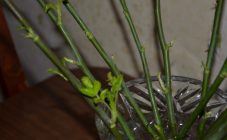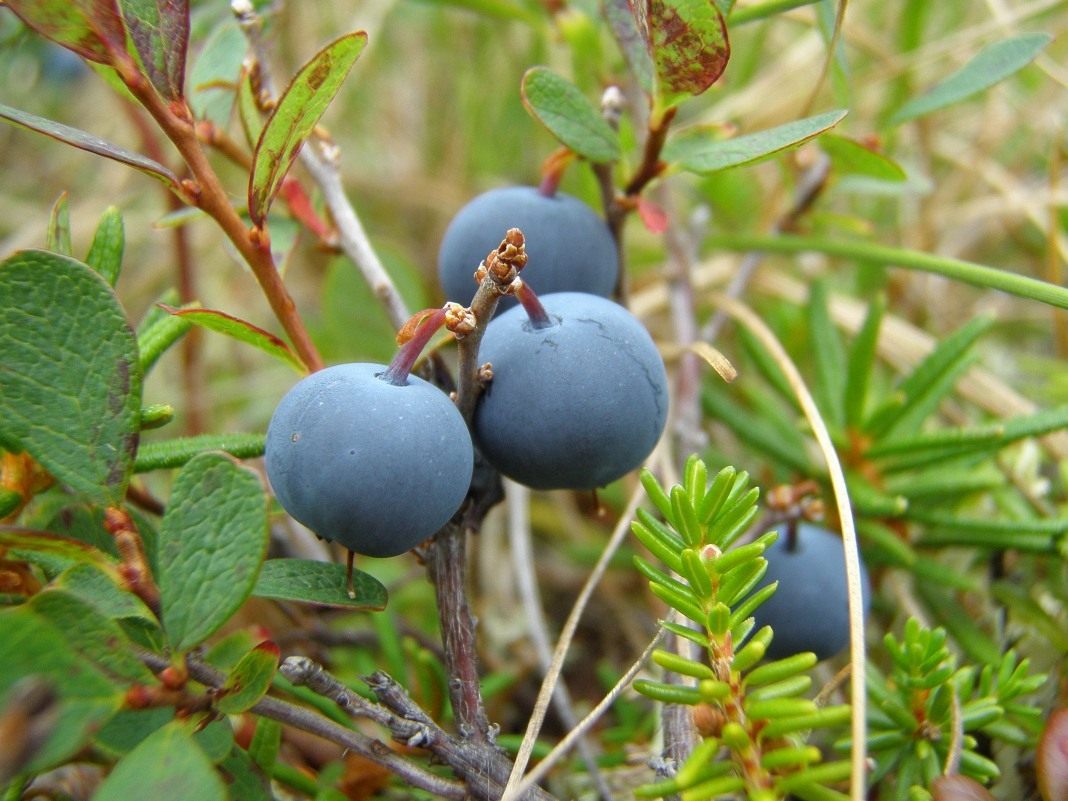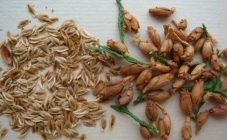Content:
The seed method of growing roses is less common than the growing method. Plants grown from seeds take longer to grow, in some cases flowering has to be expected for several years. Nevertheless, the florist must clearly know how to grow a rose from seeds in order to apply this knowledge in practice, if necessary.
Reproduction of roses
Roses are usually propagated using the following methods:
- layering;
- grafting;
- graft;
- reproduction by root shoots;
- dividing the bush;
- seed reproduction.
Is it possible to grow a rose from seeds
Seed growing of roses is rarely used in practice. It usually has the following goals:
- creation of a new stock;
- sowing and breeding seeds obtained as a result of selection crosses;
- planting park roses, forming a full-fledged seed.
The advantages of the seed method are as follows:
- Seed plants are more viable and strong.
- This method is less costly.
- When grown by seed, you can get a much larger amount of the plant than with any other method.
- These plants are easier to grow at home.
What rose seeds look like
Rose seeds are small light triangular grains, vaguely similar to buckwheat. Black rose seeds are distinguished by a darker color.
Growing a rose from seeds
The highest quality seed material for roses is obtained from ripe fruits. They are collected and carefully cut in the middle with a sharp knife with a short blade. We must try to collect the seeds without injuring them.
For seeds to germinate better, they must be extracted directly from the fruit pulp. To prevent infection of the seed with fungal diseases or mold, it is recommended to disinfect them. For this purpose, the seeds are laid out on the surface of the bottom of the sieve, which is then placed in a deep container in which hydrogen peroxide is poured. In order for the seeds to be quality disinfected, they are kept in a plate for at least 2-3 hours.
Following these seeds will require stratification. To this end, it is required to provide them with conditions that simulate the winter period. The seeds are usually placed in the lower compartments of the refrigerator for several days. It is not recommended to put them in the freezer.
For accelerated germination of seeds, a cotton pad or gauze is abundantly moistened with hydrogen peroxide and the seed is laid out on their surface. From above, the seeds are covered with the same cotton pad dipped in the substance used. The resulting "structures" are placed in plastic bags and tied tightly, and then they are moved to a shaded room with an air temperature of about + 18C. During the period from 15-20 days to 2 months, mass emergence of seedlings will begin.
Sowing seedlings and caring for it
Seeds are rarely sown directly directly into open ground. Instead, the seedling growing method is usually practiced.Most often, it involves the use of special peat tablets, which are purchased in specialized garden stores. Purchased tablets are placed in small cups, pots or other suitable containers and then filled with water. As a result, the contents of the cups swell to such a size that will allow growing seedlings in them.
In peat tablets there are special recesses, inside of which are placed the seedlings of roses that have begun to germinate. On a fertile soil mixture, they form a full-fledged powerful root system in a short period. The peat substrate usually contains all the necessary nutrients, so that the plantings do not need additional fertilization. Gradually, the substrate will begin to dry out, and then it will need irrigation. At the same time, an excess of moisture is no less dangerous for seedlings than its lack or absence.
The main condition for rapid rooting and growth of seedlings is the air temperature within + 18 ... 20C. In this case, the minimum permissible daylight hours should be 10 hours. If the seedlings are grown in winter, it is allowed to artificially increase the length of daylight hours.
If the first buds begin to form on the seedlings before transplanting into open ground, they must be cut off in time. Their presence will not allow the formation of a strong and powerful root system in seedlings, and in advanced cases, it can completely destroy plantings.
Preparing for transplant
After the seedlings grow normally and slightly woody, it is allowed to transplant them to a permanent place. It is best to carry out this procedure in the second half of spring. In practice, transplanting is often carried out in the fall, but in this case there is a high risk that young seedlings will not survive the coming winter and will freeze out. Better to wait until spring comes.
Too abrupt replanting of plants is unacceptable. Insufficiently hardened plants will quickly die outside or be weak and fail to form lush flowers. Plants are brought outside for a short period of time and then brought back. Gradually, the duration of the seedlings' stay in the fresh air is increased. After a certain period of time, the plants will get used to the changing cultivation conditions and after that they will be ready for transplanting.
The soil for plant transplantation should be light in consistency, clay-sandy. If the plot does not correspond to this description, it is allowed to improve its condition by using peat, sand or chalk. Rose prefers slightly acidic soils, the pH should vary from 5.5 to 6.5. If the soil does not meet this requirement, the situation can be corrected with dolomite flour or lime. In general, the site should not be too brightly lit, but not shaded either. Plants should not be planted near trees or houses. There should be no winds and drafts.
During the spring digging of the soil, it is advisable to add wood ash or semi-rotted manure. Fresh organic fertilizers are not used, as they can destroy the plantings.
The standard width of the planting hole is half a meter, while the depth can vary depending on the type of soil. On loamy areas, add 15 cm to the length of the root system.At the same time, on clay soils, which are usually heavy and wet, the depth of the hole should be 60-70 cm.
The step-by-step planting process consists of the following steps:
- Pour humus or compost mixed with 1-2 tablespoons of wood ash into the hole.
- On top of this mixture, make a small pile from the fertile layer.
- A seedling is placed on this elevation, straightening its roots.
- Then the hole is covered with soil.
The final planting procedure is mulching, which will retain moisture in the soil and prevent weed growth. As a rule, mulching materials are used:
- humus;
- compost;
- dry soil.
Planting seeds in open ground
In some cases, it is widely practiced to plant seed directly in the place of permanent cultivation. This method does not imply a 100% guarantee of normal germination of even most seeds, however, it is faster and does not cause as much trouble as compared to the seedling method. This is how Chinese seeds are usually planted.
Seed material is prepared for planting in the same way as when sowing seedlings. The seeds must first be germinated, after which they are transplanted into fertilized and loosened soil. The seeds should not be buried deeply in the soil; it is enough just to cover them with a layer of earth no more than 5 mm high. This planting method is usually carried out in August.
Plant follow-up
As the first frost sets in, plants planted directly in open ground should be protected from the adverse factors of the winter and autumn periods. For this purpose, the plantings are covered with hay or foil. In the middle of spring, when the weather is warm, the shelter should be removed as soon as possible, until the rotting process of the plant mass begins. However, if there is a risk of recurrent spring frosts, the shelter should be kept until May.
Any of the varieties of roses requires regular watering every two to three days, which is recommended in the mornings or evenings, since during the daytime drops of water falling on the surface of the foliage can provoke burns. Water is poured under the root and this continues until the soil is completely saturated with moisture. If drought does not begin with the onset of autumn, then irrigation is stopped so as not to provoke the growth of young shoots, which will not have time to finish growing by winter and will freeze out.
Plants must be fed on time. During the growing season, plants need about four additional fertilizing. Nitrogen preparations are allowed to be used only in the spring.
For the rejuvenation of the plant and the formation of its crown, it is recommended to carry out a special pruning every year. Stems older than 3 years are removed, and they also get rid of non-flowering, sick, injured, drying shoots and small shoots. As winter approaches, the plantings are spudded, and the shoots, if possible, are wrapped in paper.
Having knowledge about how to plant rose seeds and how to grow a rose from a seed will be a good help for any grower. The correct application of knowledge will allow you to get lush plantings of roses in the garden or flower bed.
